After our first own boat show needed my full attention last weekend, I am finally back in Luebeck to take a breath, but just a small one: The next boat show is coming up in two days. Nevertheless, I´d like to take the chance to write about an occasion of re-fitting a brand new Oceanis 51.1 with a complete Quantum sails setup. Why I think this is so important? Well, you might remember my post about a similar happening taking place aboard an Oceanis 46.1 last year, this one is different. And I assume, much more interesting since the 46.1 happened to be a “First Line” performance-trimmed yacht with a classic full-batten mainsail/Genoa setup. The Oceanis 51.1 I talk about now is a standard inmast-furling mainsail/self-tacking Jib-rigged boat, so, much closer to the average cruising boat mostly used.
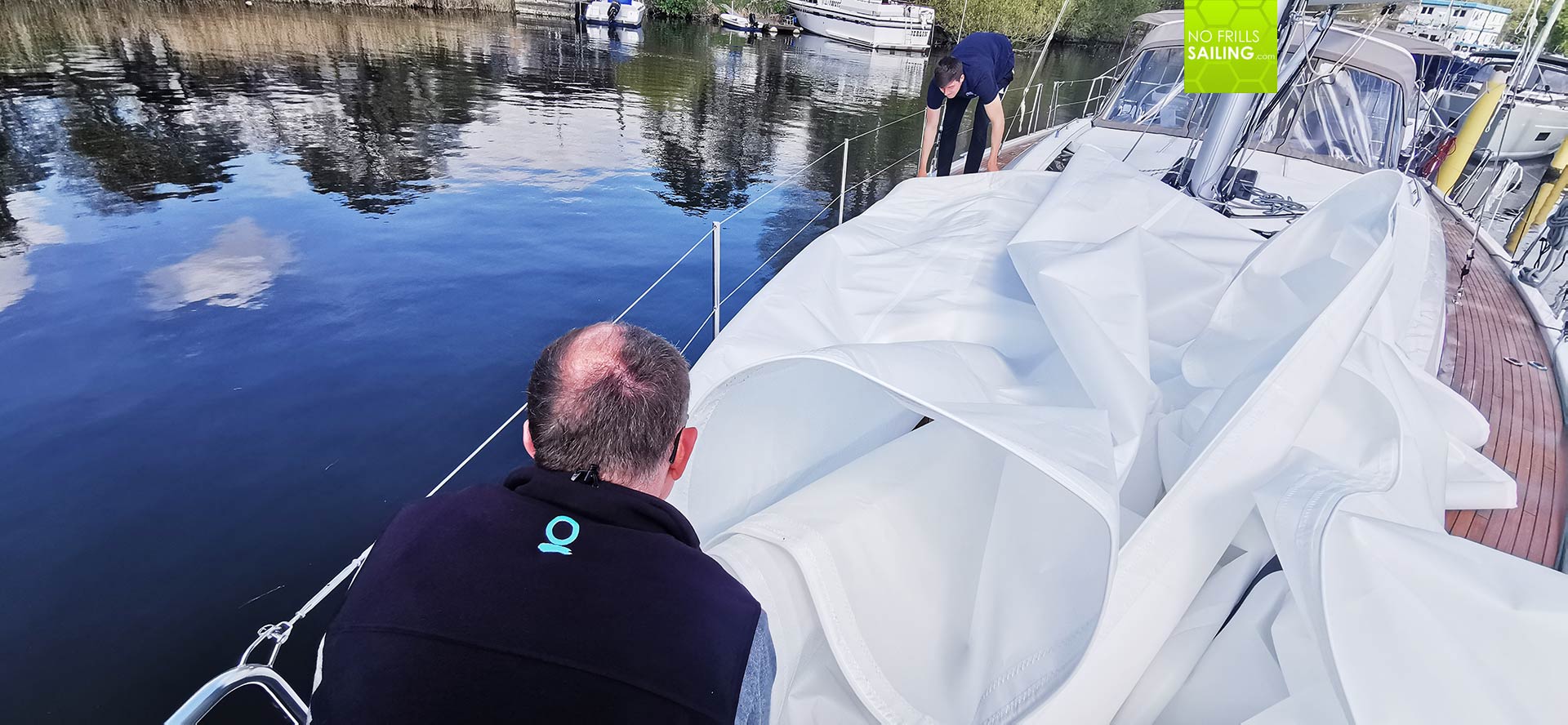
As with all Oceanis yachts in the range bigger than 30 feet, this Oceanis 51.1 comes with a self-tacking Jib and an inmast-furling main in standard. My client boat his second yacht with me, his previous boat, an Oceanis 41.1 was equipped with full-batten main and Genoa: As he now approaches his high Sixties, the owner wanted a more comfortable, let´s call it less “physical”, rigging. The 50 footer is a big ass boat in itself so I opted for an all-electric winch setup anyway and affirmed his desire for easy sailing. In fact, the need to climb into the boom to pack the mainsail isn´t apparent with a furling main although I personally do not share the conception that furling mainsails are easier to operate.
Inmast Furling Main Sail Upgrade: CDX Cruising Laminate!
But client is king, of course, and so two weeks ago it was a great day to welcome Quantum Germany-boss Sven Krause at the scene who brought the 360-setup or the new garments. I write “360” because our owner ordered not just the standard sails, main and jib, but also the lightwind-package consisting of an A3 cruising Gennaker and a Code 0-sail. We started by putting up the mainsail.
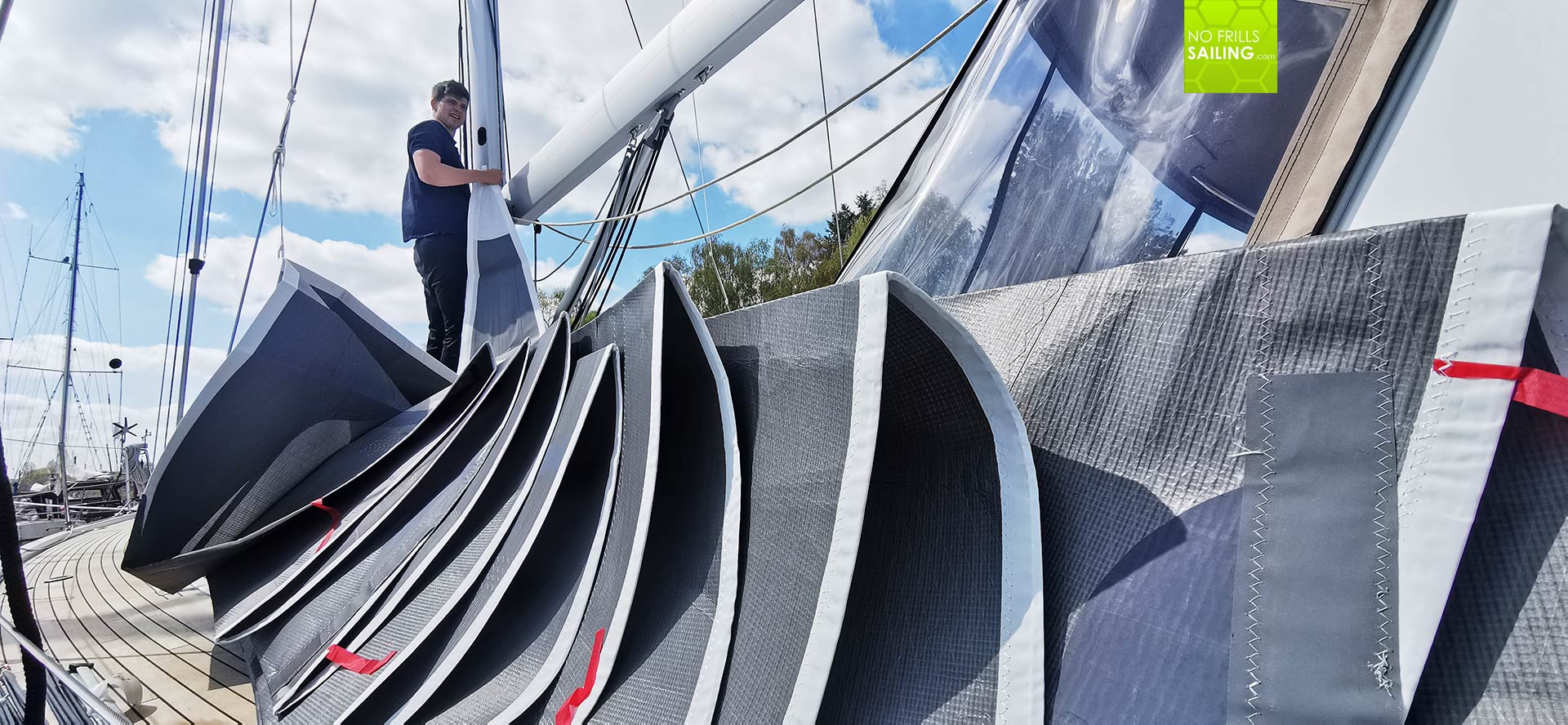
In this we went for the Contender cloth CDX Pro, which is a durable yet highly performing laminate. I combines the “best of both worlds”, if to say so: The durability of Dacron and the non-deformable character of a laminate sail. CDX Pro with Quantum is available in two colors, check out my post about the Oceanis 46.1 to see the “silver”-like changing grey – our client of the 51.1 went for a more “coffee”-like brownish color which perfectly matched his custom made sprayhood/Bimini-choice.
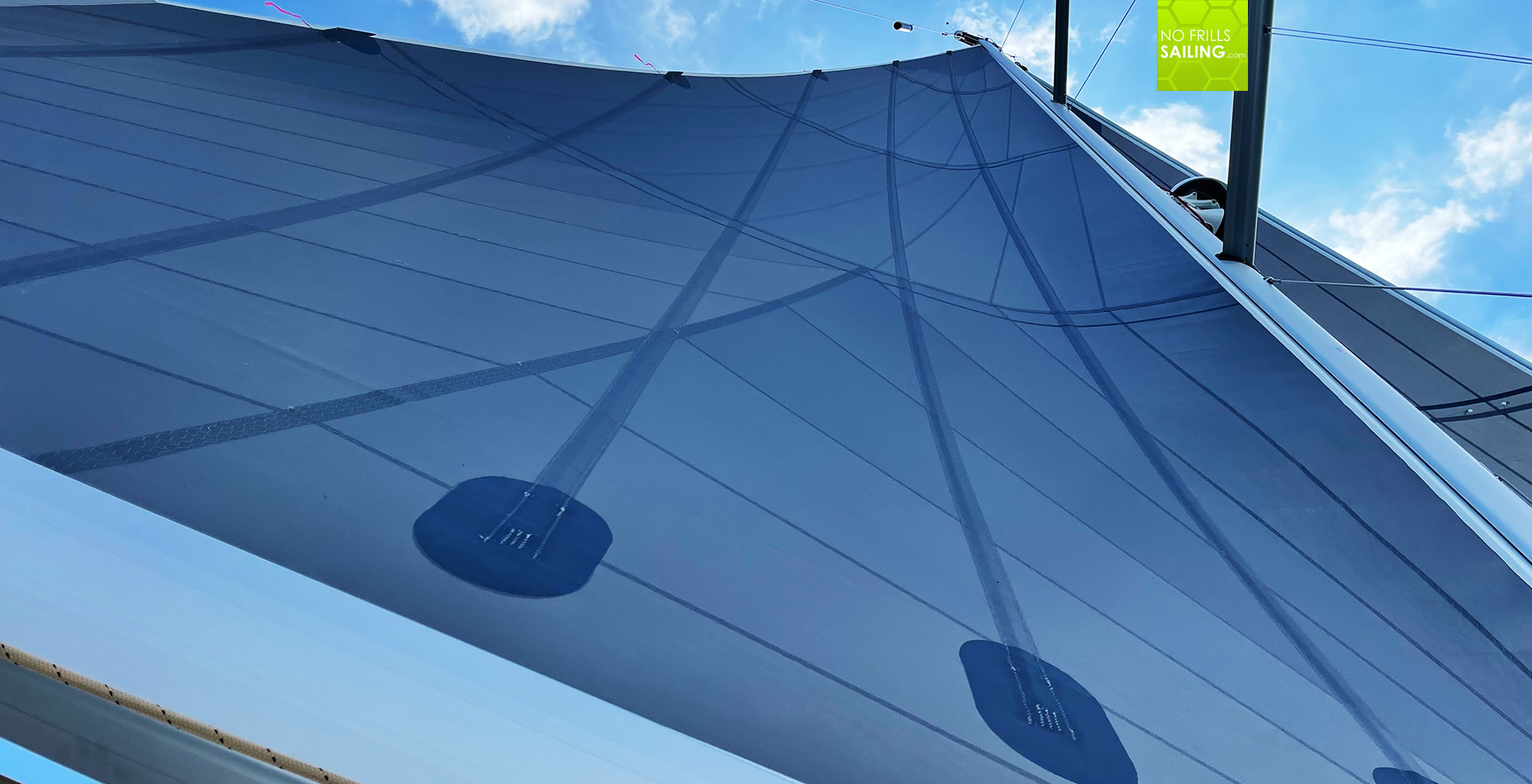
I don´t like inmast furling that much because most standard cloth is cheap. No battens means no profile and no chance for a proper sail-trim especially upwind. I do have extensive experience with those standard low-price Dacron inmast-mainsails and those are awful, no profile, no real fun. With Quantum we decided to add vertical battens to have at least some degree of profile and possibility to shape the sail accordingly. It took us some 45 minutes to prepare the sail and put it up into the mast.
Self-tacking Jib with an Extra Kick
Self-tacking Jibs are absolute easy to operate. Most sailors who went for having such a sail praise the comfort: No need for two sheets, no taking over of sheets from one winch to another, just tacking and gybing at will, “fire and forget”, as to say. I see this and appreciate their standpoint, but as with inmast furling I don´t really like self-tacking Jibs as they lack fine tuning and – especially in lighter to moderate winds won´t have enough power to speed up the boats.
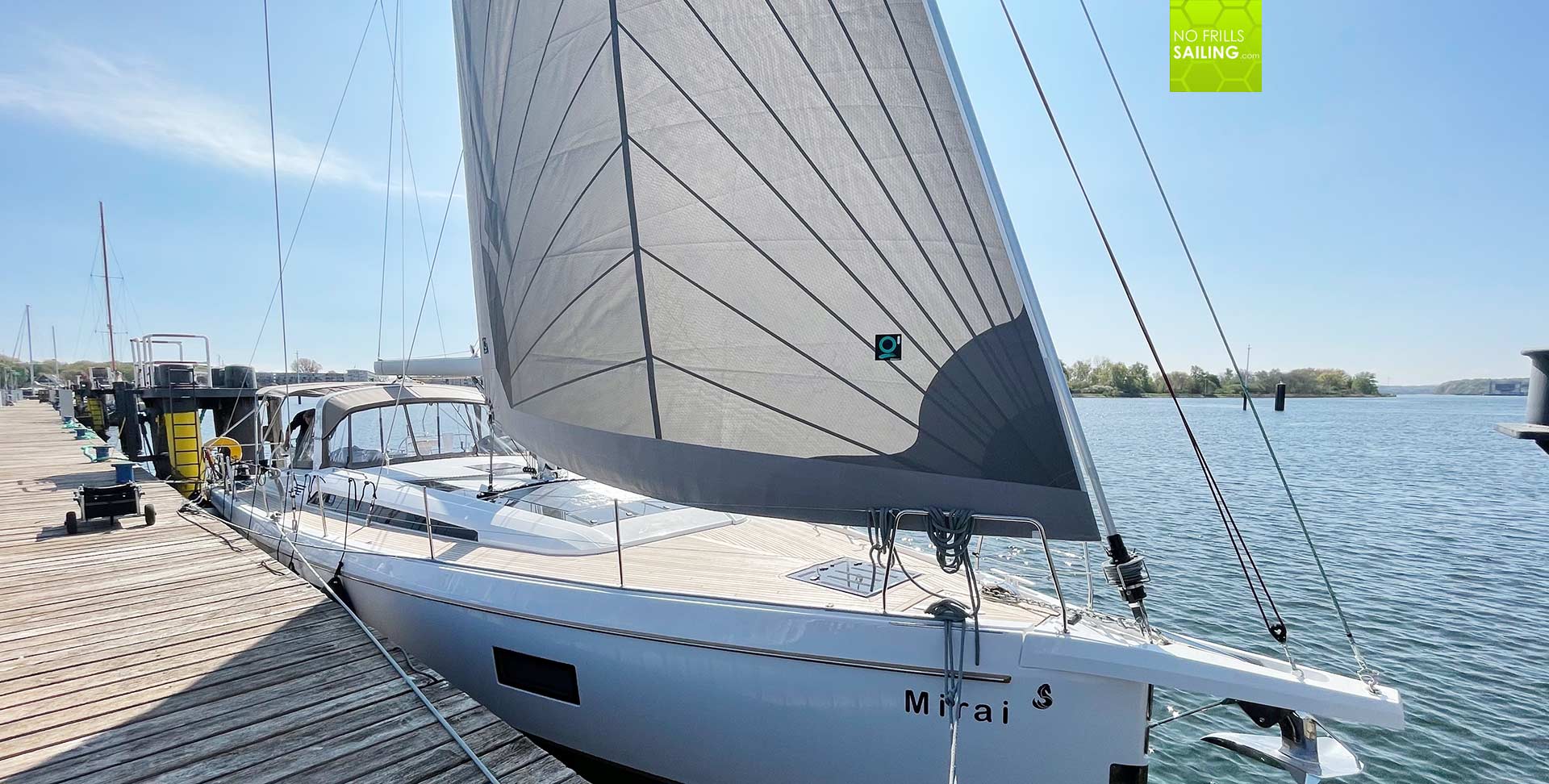
Anyways, our client opted to stick with it, so Quantum found the best solution: Also made of Contender CDX cruising laminate, this Jib has a tri radial cut with extra strengthened clews. Sunward side outhaul and luff is additionally fitted with an UV-protection matching the sail´s color. Fitting this one to the forestay and tuning the furling was a no-brainer for Sven as well and after one and half hours roughly the boat was readily fitted with the standard cloth.
First sea trial: Amazing looks & performance
Weather was just fine with temps reaching 15 degrees, a mostly blue sky with a friendly sun being the harbinger of an hopefully nice summer. We casted off in a light 8-10 knots TWS breeze, barely enough to fill the sails and create at least some drive for the majestic boat. I am always amazed like being on the water for the first time how easy and effortless the power of the wind can move such a heavy object: This Oceanis 51.1 is truly not “First Line”, as she is packed with all amenities you can think of in a modern cruising yacht, pretty heavy in the end.
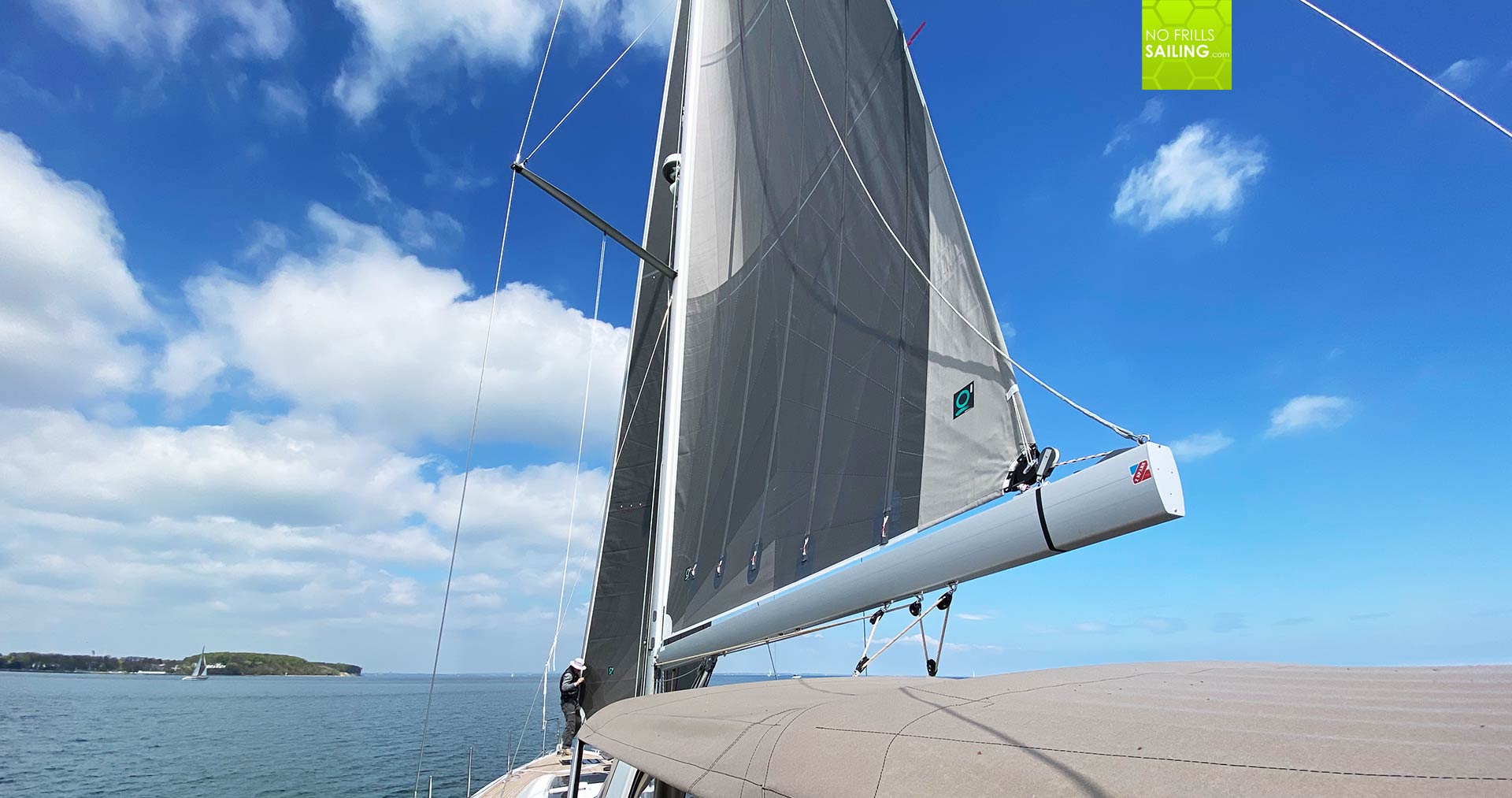
But, behold, our behemoth graciously moved through the fine rippled water, leaving a nice white trail in our wake and a low-tuned murmur of water gurgling at her stern. We tested reefing – which is literally pulling two ropes with one of the powerful electric winches. The Jib worked flawlessly, operating the main needed some advice. Other than on a full-batten mainsail you want to have at least some tension on the outhaul-rope to prevent the sail from killing: This can create a drape, which can cause the mechanism to jam. Another minus for me personally. But our client did it well and the process went all along just fine. So, with main and Jib tested, we still had two more sails to check.
Lightwind Sails: Code 0-Action
Strangely enough, most people I talk to – first buyers – tell me they´d go for either a Code 0 or a Gennaker. I don´t know where this comes from, somehow they think both sails are merely the same, one “more tricky” – being the Gennaker – and one more easy, the Code 0, that comes with a furling device. Well, of course that is not the case: In essence, we need both to be able to cover all points of sail. My client is a keen sailor so he went for both sails in the first place.
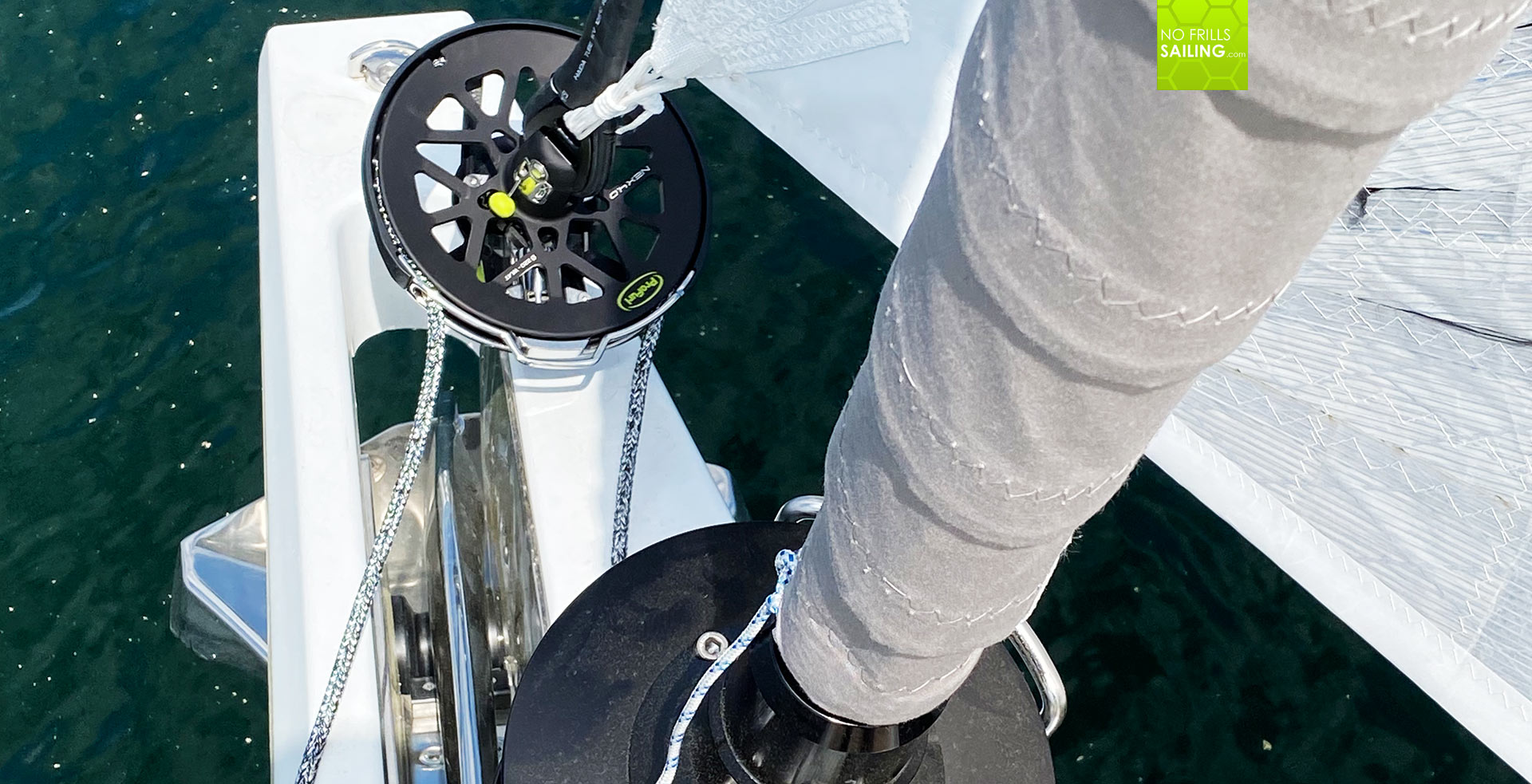
Setting up the ProFurl-equipment on shore too us some minutes, unfortunately we couldn´t find a suitable place to fit the garment to the cable (as I have demonstrated with a smaller Code 0 sail for a 30-footer here), so Sven reconned we´d cast off and do it out at sea: “Just putting it up out of the box and have it furled onto the cable afterwards.” Conditions were perfect and we did so.
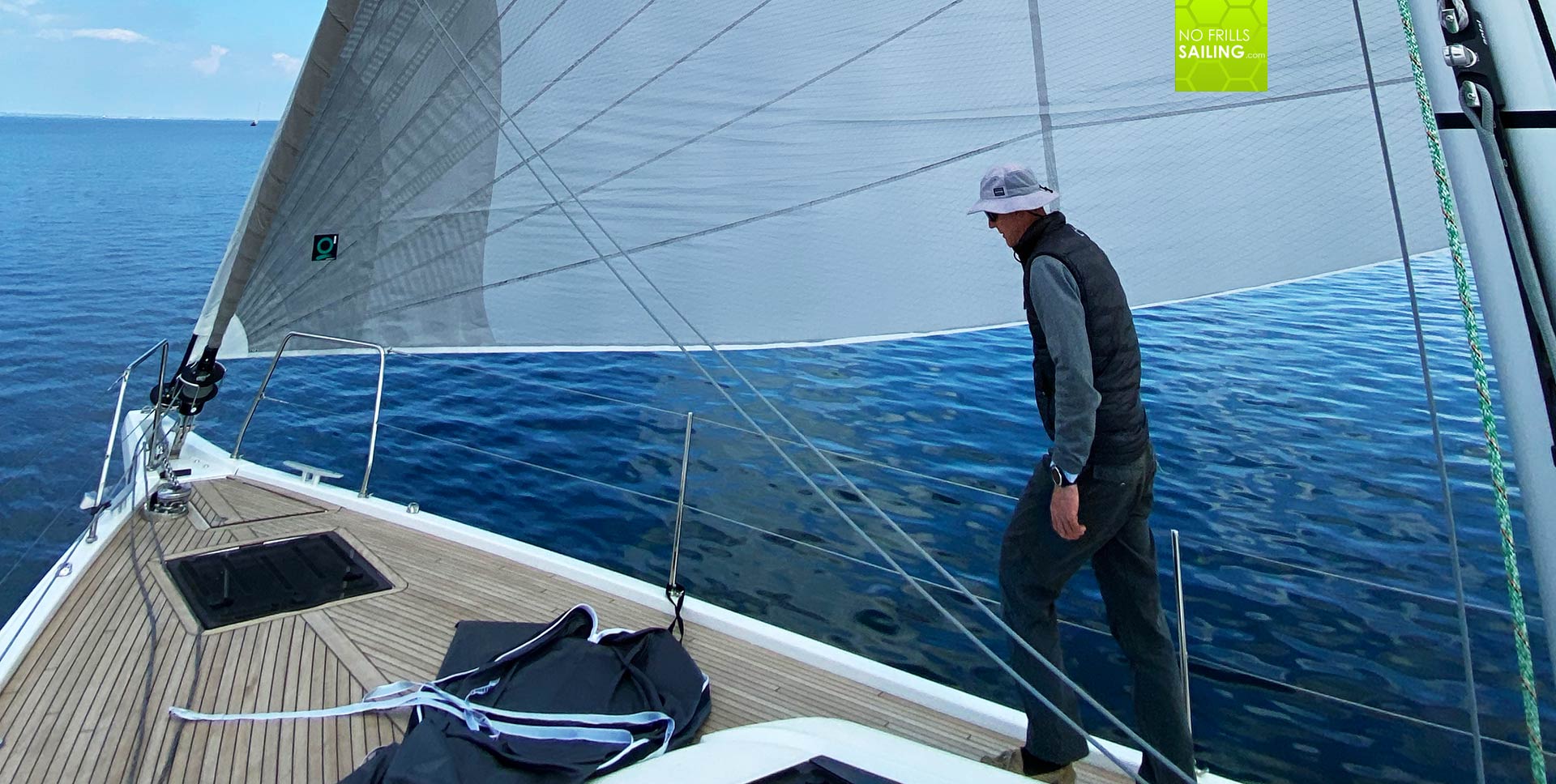
The Code 0 lightwind sail is made from CS/CZ-laminate garments by Dimension Polyant, German market leader in sailcloth. As for the Oceanis 51.1 we went for a slightly heavier quality and chose the color plain white, which fits perfectly the bright white gelcoat color of the Oceanis´ hull. For our client it was the first time sailing a Code 0 and, as with all things connected to sailing, this comes with its own little tweaks and hints.
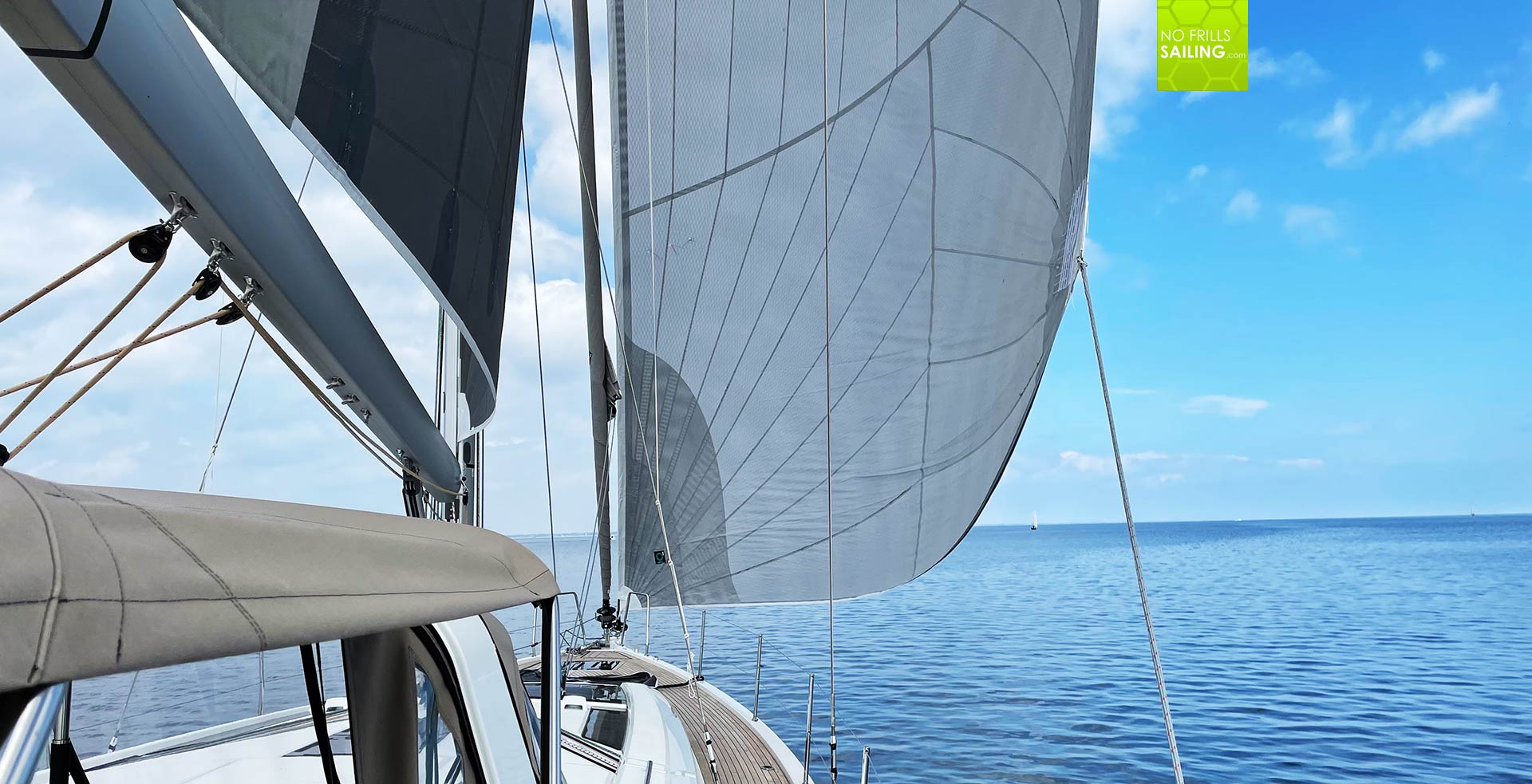
Sven turned out to be a perfect sailing instructor and guided our freshly baked 50-feet skipper in utilizing the Code 0 sail. Wind was still sufficient to exert at least some pressure on the sail to produce quite nice speed upwind. The difference between light wind sailing a Jib and having a Code 0 in the same conditions was literally perceptible. The boat sprung to life and accelerated, as did the confidence of our client.
A3 Cruising Gennaker!
Sadly, after exercising two or three tacks with a partially reefed Code 0, wind began to die down. “Let´s see what the Gennaker is looking like!”, our client insisted. With dying down I mean it went from 8 knots to 1.5 knots TWS with rotating directions, no chance to see it performing. We took down the fully furled Code 0 and put it into the huge forward sails locker of the Oceanis and hauled the equally huge Gennaker on deck.
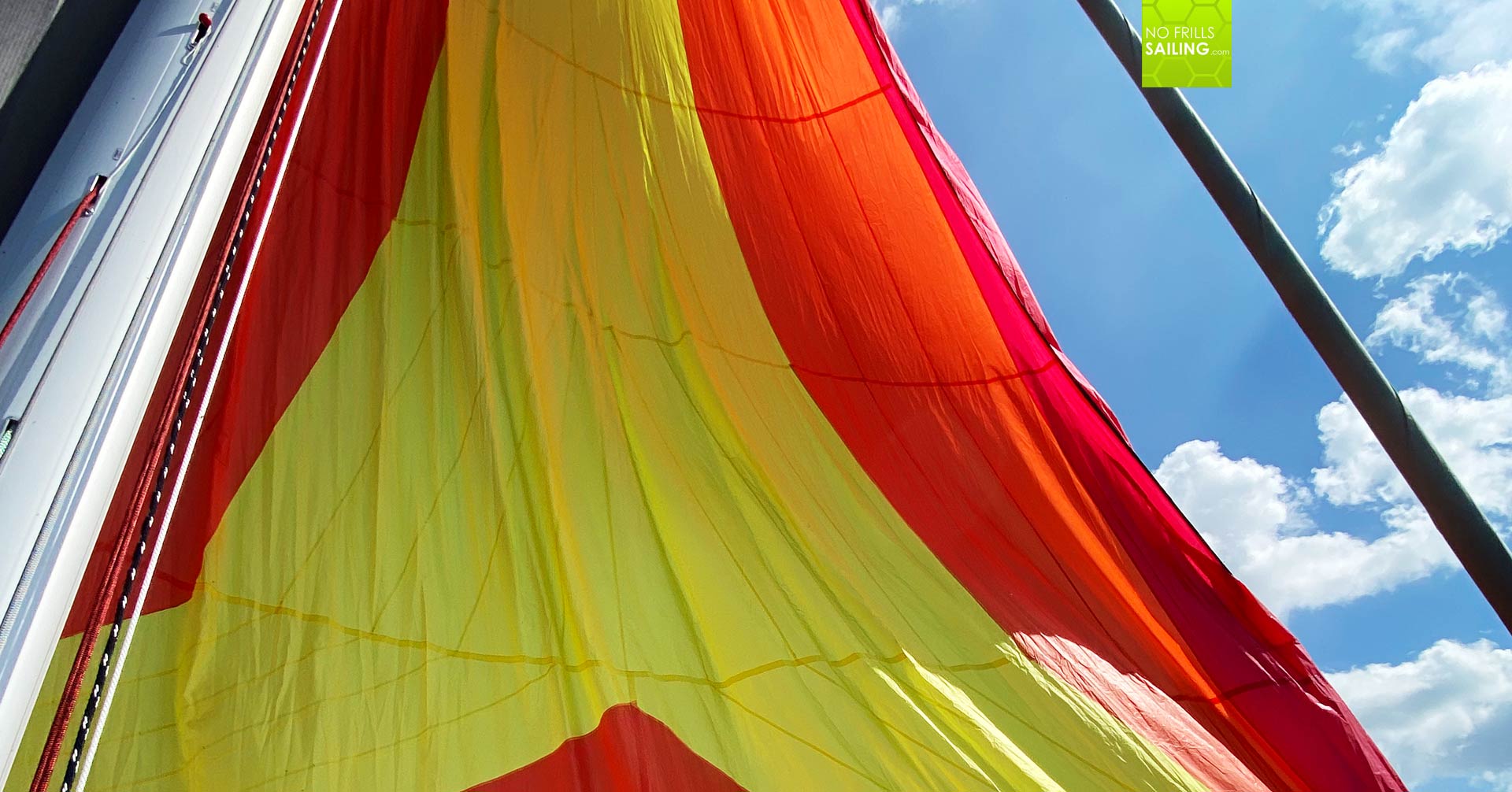
Our client loves colors and where most people go for a single-colored A3 he chose a bloomy, red-yellow combination that reminded me of the classic Spinnakers of past times. Trying not to get entangled with the spreaders, we hoisted the sock which was easy as ABC thanks to the powerful Harken electric winch and pulled hard on the halyard raising the ATN-sock. The colors are amazing indead, but without any wind at all, it was a pure test of function. No sailing this time.
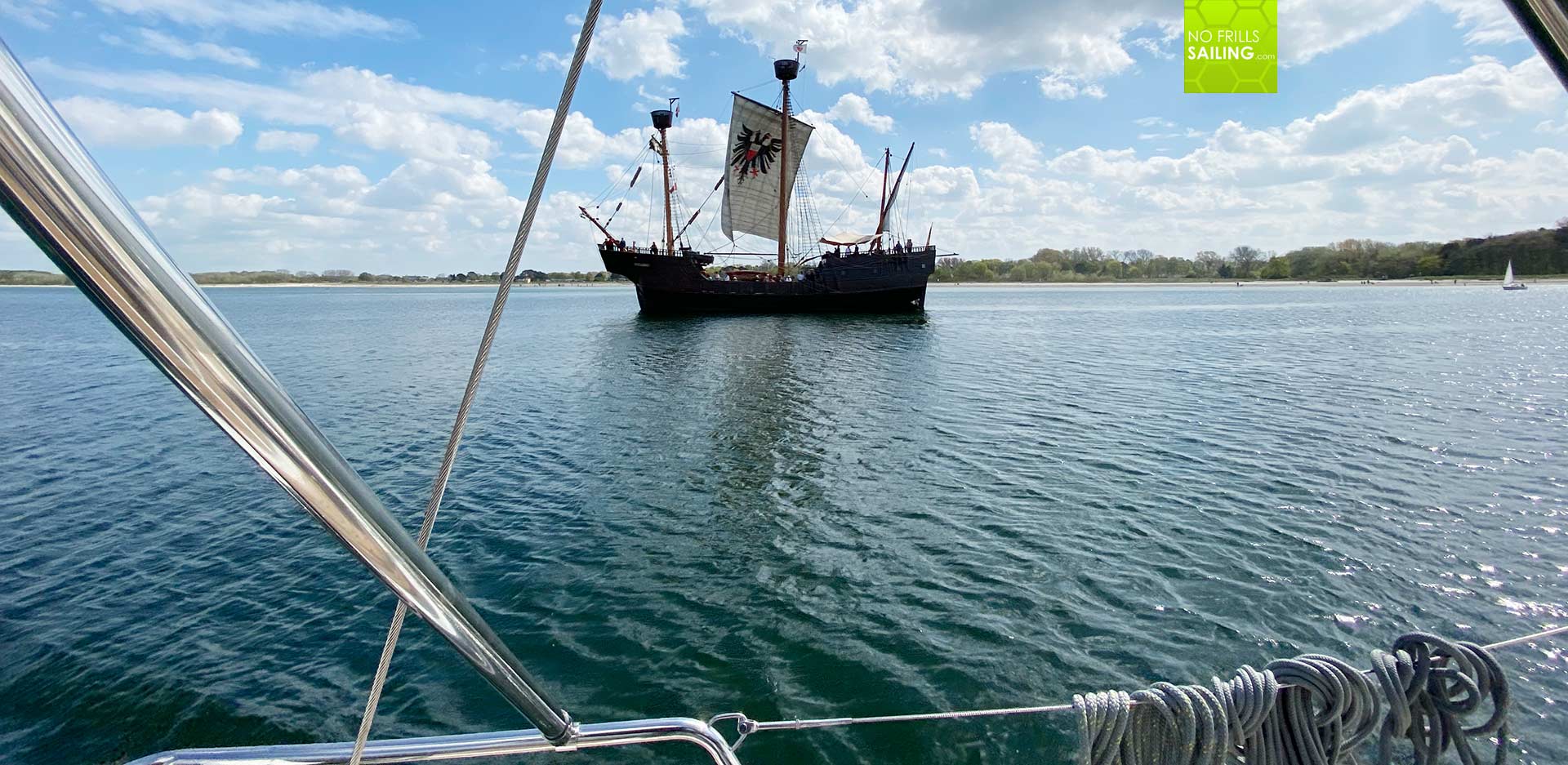
A rare sight was the passing of the famous last real cog ship, LISA VON LUEBECK which also gave up on sailing and switched to her hidden secret modern Diesel engine, something we as well did, steaming back to Travemuende where the handover process then concluded. Slowly the boat went upriver, gracefully parked sideways by the aid of her powerful stern thruster and bow thruster.
Happy Sailing, fair winds!
Sven left us as he had some other appointments, not without receiving a big praise by our client who insisted that this service was unique in his whole sailing life: The CEO personally delivering new sails, setting up the cloth onto the mast and taking so much time to explain, show and train his client. I stood by and congratulated myself for having found such a formidable partner, adding value to our product. And isn´t that what this all is about? Being happy aboard our boats, having fun with the wind and the waves?
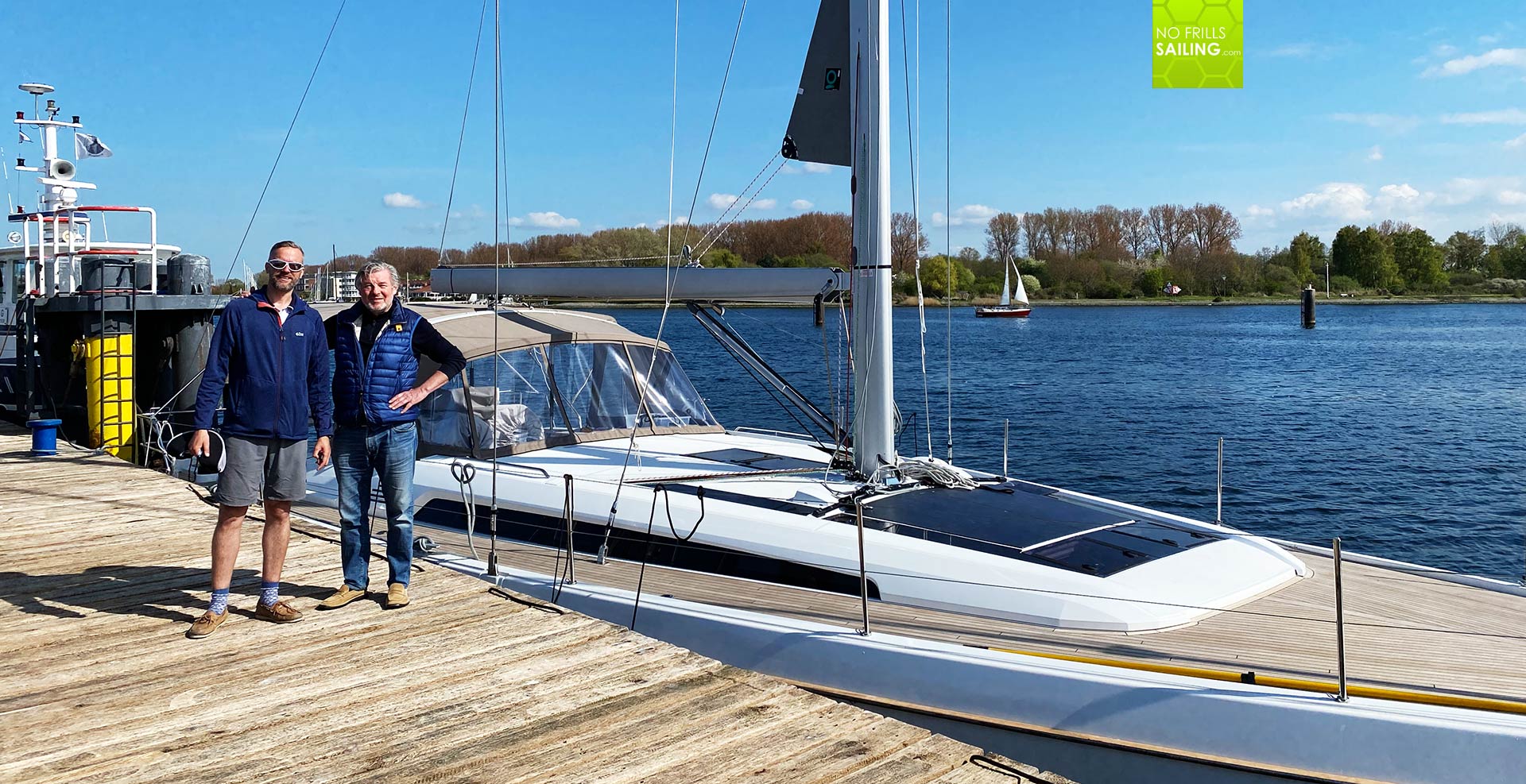
We parted some hours later after finishing the handover, signing off the boat into his possession and having a bottle of fresh, cold beer from the brand new fridge to celebrate another great boat. I promised to sail by on GEKKO to meet him aboard his yacht: “Let´s go out when we have some more wind to see what this ship can really do!”, he said waving goodbye this evening – and I know, with those nice sails, he indeed will do considerably more that with the standard Dacron cloth that is now carefully packed and stored.
You might as well read these related articles:
Oceanis 51.1 in the yard in France
Night flight: Transporting the 51.1 on the road
Solar power for big sailboats: Oceanis 51.1
